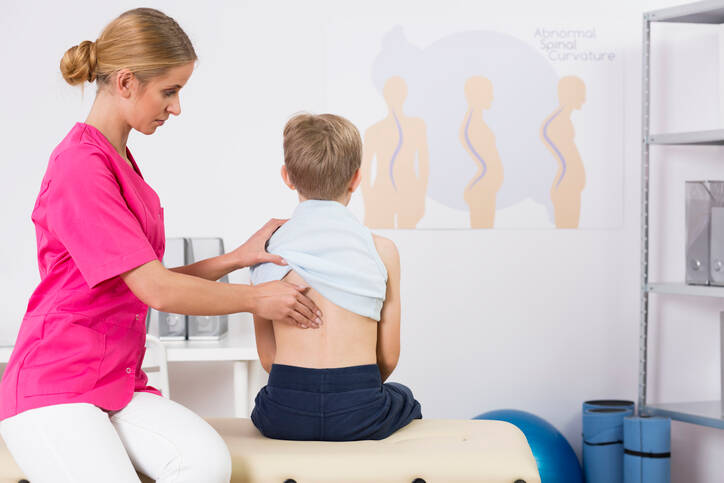- Weiss HR, Turnbull D, Bohr S (September 2009). "Brace treatment for patients with Scheuermann's disease - a review of the literature and first experiences with a new brace design". Scoliosis. 4 (1): 22. doi:10.1186/1748-7161-4-22. PMC 2761858. PMID 19788753.
- Horn SR, Poorman GW, Tishelman JC, Bortz CA, Segreto FA, Moon JY, et al. (January 2019). "Trends in Treatment of Scheuermann Kyphosis: A Study of 1,070 Cases From 2003 to 2012". Spine Deformity. 7 (1): 100–106. doi:10.1016/j.jspd.2018.06.004. PMC 7102192. PMID 30587300.
- Huq S, Ehresman J, Cottrill E, Ahmed AK, Pennington Z, Westbroek EM, Sciubba DM (November 2019). "Treatment approaches for Scheuermann kyphosis: a systematic review of historic and current management". Journal of Neurosurgery. Spine. 32 (2): 235–247. doi:10.3171/2019.8.SPINE19500. PMID 31675699. S2CID 207835405.
- Riouallon G, Morin C, Charles YP, Roussouly P, Kreichati G, Obeid I, Wolff S (September 2018). "Posterior-only versus combined anterior/posterior fusion in Scheuermann disease: a large retrospective study". European Spine Journal. 27 (9): 2322–2330. doi:10.1007/s00586-018-5633-x. PMID 29779056. S2CID 29169417.
- Hawes M (2006). "Impact of spine surgery on signs and symptoms of spinal deformity". Pediatric Rehabilitation. 9 (4): 318–339. doi:10.1080/13638490500402264. PMID 17111548. S2CID 20680230.
- Weiss HR, Goodall D (August 2008). "Rate of complications in scoliosis surgery - a systematic review of the Pub Med literature". Scoliosis. 3: 9. doi:10.1186/1748-7161-3-9. PMC 2525632. PMID 18681956.
- Hawes MC, O'Brien JP (2008). "A century of spine surgery: what can patients expect?". Disability and Rehabilitation. 30 (10): 808–817. doi:10.1080/09638280801889972. PMID 18432439. S2CID 19443315.
- Shinzawa F (2007-10-18). "Bruins rookie Lucic punches up résumé – The Boston Globe". Boston.com. Retrieved 2010-08-31.
- Rosenthal K (12 October 2014). "There's a good reason why Hunter Pence throws like that". Fox Sports. Retrieved 13 October 2014.
- "One Year On George Sampson". The Times. London. 2009-05-17. Retrieved 2010-05-23.
- ncbi.nlm.nih.gov - a study - Familial Scheuermann disease: a genetic and linkage study
Scheuermann's Disease, Juvenile Kyphosis: Causes and Symptoms

Photo source: Getty images
Most common symptoms
- Nerve pain
- Leg Pain
- Muscle Pain
- Spirituality
- The Hump
- Muscle stiffness
- Back Pain
- Muscle weakness
- Fatigue
Show more symptoms ᐯ
Treatment of Scheuermann's disease: medication, physiotherapy
Show moreScheuermann's Disease is treated by
Other names
Scheuermann's kyphosis, Calvé disease, idiopathic juvenile kyphosis of the spine










